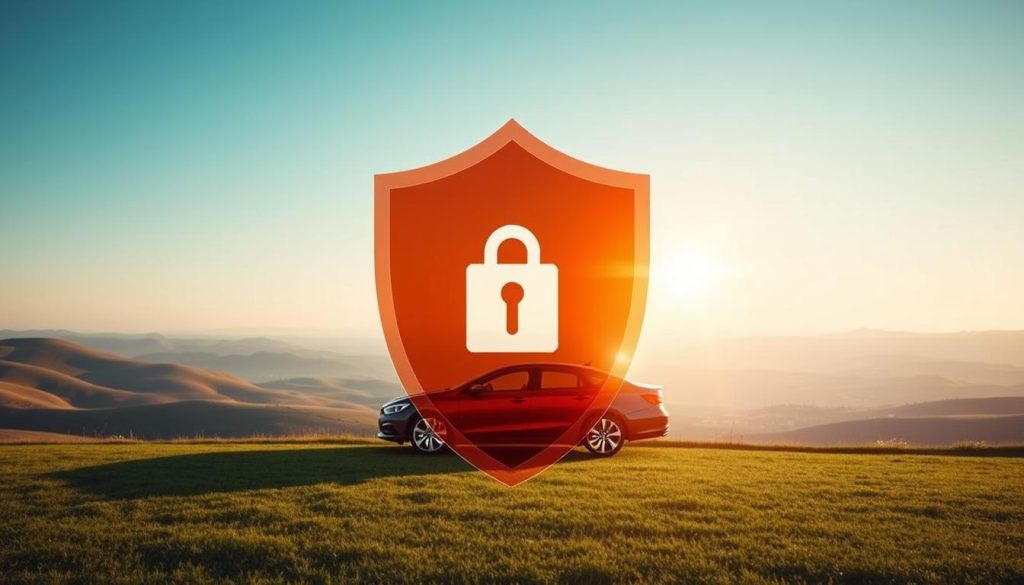GAP (Guaranteed Asset Protection Certified) Test Guide
In the world of cars and money, the GAP Test is key. It helps keep people safe from big money losses when a car is totaled. This guide will explain what the GAP Test is, why it matters, and what it checks.
The GAP Test makes sure car finance experts know how to value cars and figure out loan payoffs. These skills help protect people’s money when a car is lost. Getting GAP certified shows these experts are good at handling auto loan and insurance issues.

Key Takeaways
- The GAP Test is a critical certification that ensures automotive finance professionals are equipped to protect consumers against loan deficiency in the event of a total loss.
- Understanding vehicle valuation methodologies and loan payoff calculations is essential to providing comprehensive gap coverage and total loss protection.
- Earning the GAP certification demonstrates expertise in automotive finance protection, upside-down loan coverage, and car buyer assurance programs.
- The GAP Test covers topics such as vehicle insurance, loan protection, debt cancellation, and lease payoff to ensure professionals can effectively advise clients.
- Passing the GAP certification exam is a testament to an individual’s commitment to providing exceptional customer service and safeguarding consumers’ financial assets.
Understanding GAP (Guaranteed Asset Protection Certified) Test
Auto financing can be tricky, but knowing about GAP coverage is key. This insurance helps protect car buyers and lessees from financial trouble. It’s especially useful when facing an upside-down loan or lease payoff.
What is GAP Coverage?
GAP coverage is an extra insurance that fills the gap between what you owe on a car and its actual value. If your car is stolen or damaged beyond repair, GAP pays off the loan. This way, you’re not left with a big debt.
Why is GAP Coverage Important?
GAP coverage is vital for several reasons:
- Debt Cancellation: It can wipe out the remaining debt on a loan or lease. This prevents you from having to pay off a large amount.
- Upside-Down Loan Protection: GAP coverage protects you from being left with a loan that’s more than the car’s value. This is common when the car loses value faster than you pay off the loan.
- Automotive Finance Protection: It reduces the risk of being stuck with a loan you can’t pay off. This adds a layer of financial safety for car buyers and lessees.
It’s important to understand GAP coverage if you’re buying or leasing a car. Knowing about it can make the process smoother and more financially secure.

Preparing for the GAP Certification Exam
Becoming a certified GAP (Guaranteed Asset Protection) professional is a big step in the auto financing and insurance world. To get ready for the GAP certification exam, you need to follow a clear plan. This plan should cover both the theory and the practical sides of this field.
First, you must really get the basics of GAP coverage. This includes knowing its purpose, how it’s calculated, and how to value vehicles. Knowing these basics well is key to doing well on the certification exam.
- Comprehensive Study Materials: Get all the study materials you can for the GAP certification exam. Look for official guides, online courses, or resources specific to GAP and vehicle appraisals.
- Practice Exams and Assessments: Do practice exams and assessments to see how ready you are. This helps you learn how to take the exam and manage your time.
- Networking and Mentorship: Talk to experienced GAP pros or join industry groups for advice. They can share tips, best practices, and offer personal guidance to help you through the certification process.
By taking these steps, you can boost your chances of passing the certification exam. This will make you a valuable part of the auto financing and insurance world. The GAP (Guaranteed Asset Protection Certified) test, certified vehicle appraisals, and car buyer assurance program are all key parts of this field. Mastering them can lead to new career paths in auto financing, vehicle insurance, and loan protection.

Key Factors Assessed in the GAP Test
The GAP (Guaranteed Asset Protection) certification exam looks at important factors for GAP coverage. It focuses on how vehicles are valued and how loan payoffs are calculated.
Vehicle Valuation Methodologies
Getting a vehicle’s value right is key for GAP coverage. The test checks out different ways to value a vehicle. This includes certified appraisals, pricing guides, and current market data.
Candidates need to show they know how to use these methods. They must understand how to find a vehicle’s true value.
Loan Payoff Calculations
Knowing how to figure out a loan’s balance is also crucial. The exam dives into the math behind this. It covers topics like auto loan deficiency and total loss protection.
Being good at these calculations helps make sure GAP coverage works as it should. It protects the policyholder’s financial well-being.
Conclusion
Guaranteed Asset Protection (GAP) Certified refers to a designation given to professionals or dealerships knowledgeable in offering GAP insurance. GAP insurance is designed to protect car buyers in the event their vehicle is totaled or stolen, and the insurance payout is less than the amount owed on the loan or lease. This coverage “bridges the gap” between the vehicle’s depreciated value and the outstanding balance on the loan.
Being GAP Certified indicates that the professional or dealership has expertise in explaining and selling GAP insurance, ensuring that buyers understand how it can protect them financially. This certification enhances trust, as it assures customers that they are receiving accurate information and appropriate recommendations regarding GAP coverage.
FAQ
What is GAP (Guaranteed Asset Protection) coverage?
GAP coverage is an optional insurance product. It helps protect car buyers and lessees in case of a total loss. It covers the difference between the vehicle’s current market value and the outstanding loan or lease balance. This prevents the consumer from being left with a financial obligation after the vehicle is totaled.
Why is GAP coverage important?
GAP coverage is important because new vehicles depreciate quickly. Often, the consumer ends up “upside-down” on their loan or lease. In a total loss, the insurance payout may not cover the full outstanding balance. This leaves the consumer responsible for the remaining debt. GAP coverage helps mitigate this risk and ensures the consumer is not left with a financial burden.
What is the GAP (Guaranteed Asset Protection Certified) Test?
The GAP (Guaranteed Asset Protection Certified) Test is a certification exam. It assesses an individual’s knowledge and understanding of the GAP coverage industry. The test covers topics such as vehicle valuation methodologies, loan payoff calculations, and the overall functionality of GAP coverage. Passing the GAP Test is a requirement for professionals to become certified in offering GAP products to consumers.
What are the key factors assessed in the GAP Test?
The GAP Test evaluates an individual’s understanding of two key factors. These are vehicle valuation methodologies and loan payoff calculations. The test assesses the candidate’s knowledge of how to accurately determine the current market value of a vehicle. It also evaluates their ability to properly calculate the outstanding loan or lease balance in the event of a total loss.
How can I prepare for the GAP Certification Exam?
To prepare for the GAP Certification Exam, review study materials provided by the certifying organization. These materials typically include detailed information on vehicle valuation, loan payoff calculations, and the overall GAP coverage industry. Additionally, practicing sample exam questions and reviewing case studies can help ensure you are well-equipped to successfully pass the test and become a GAP-certified professional.